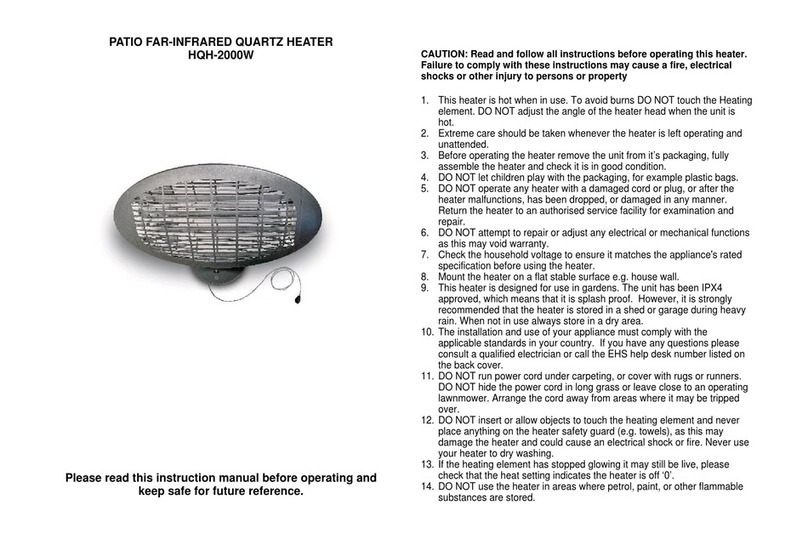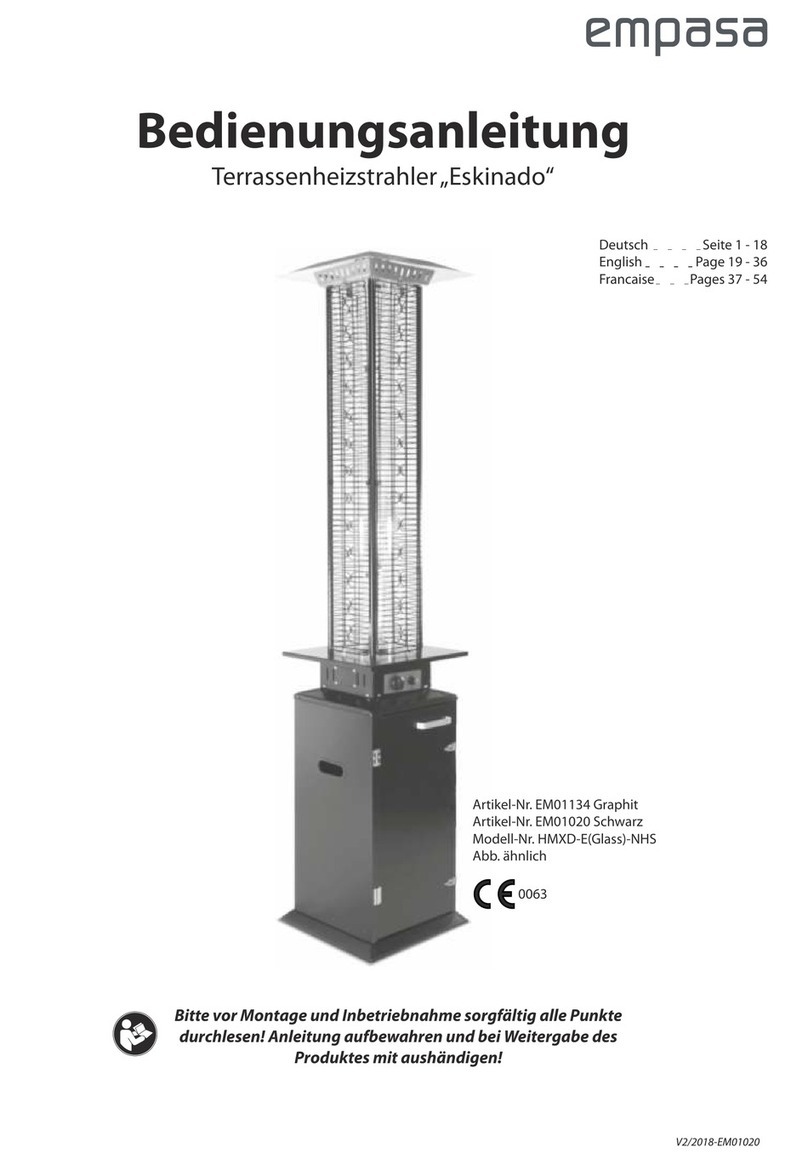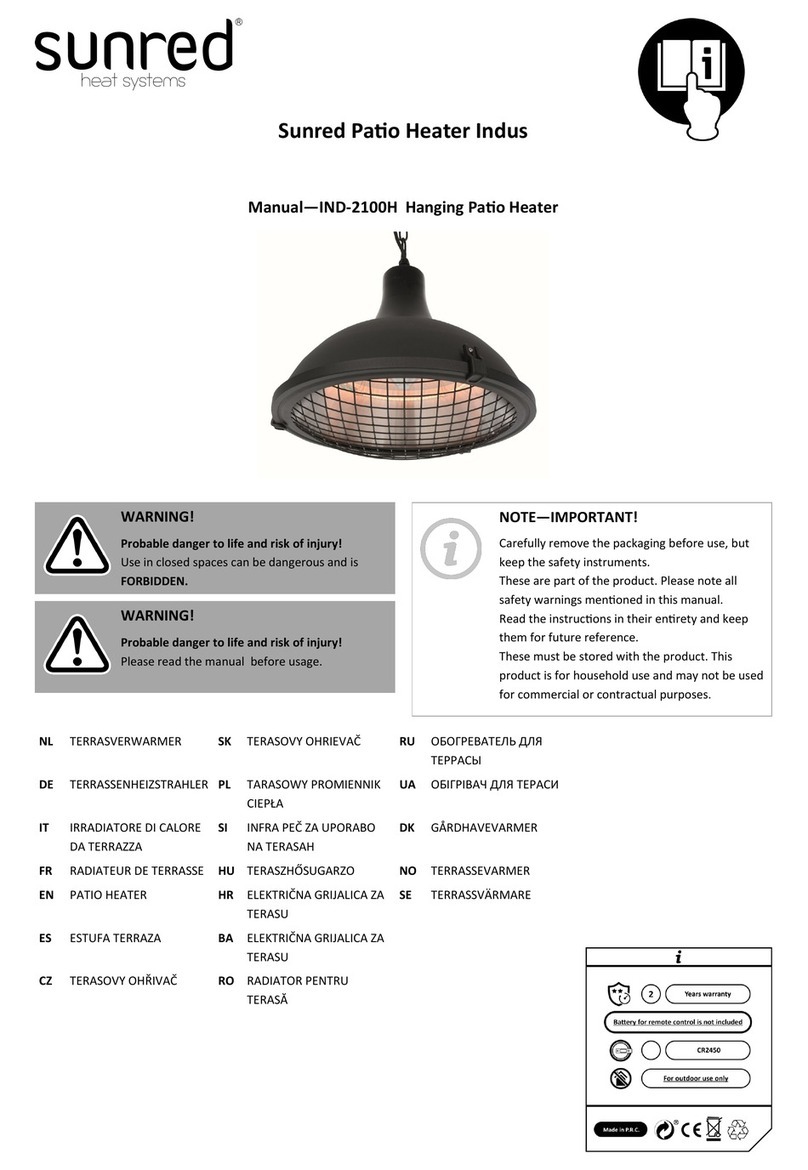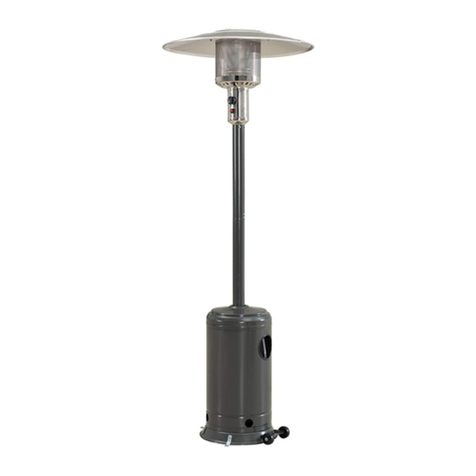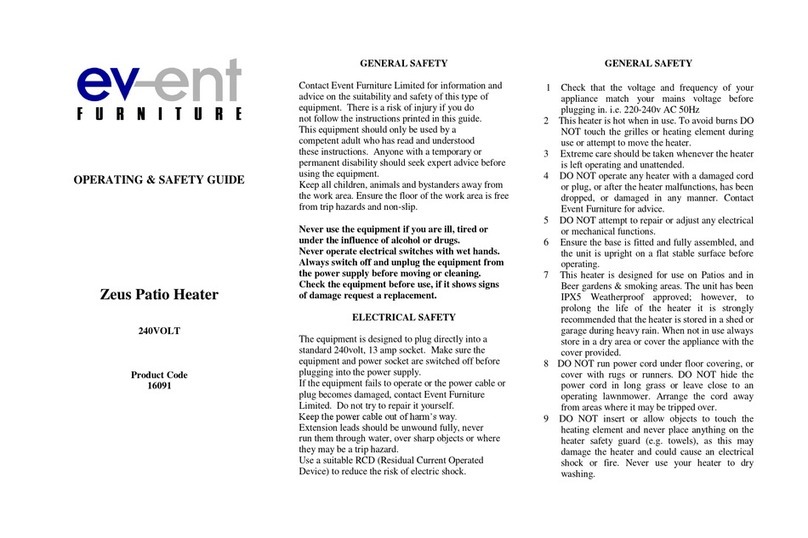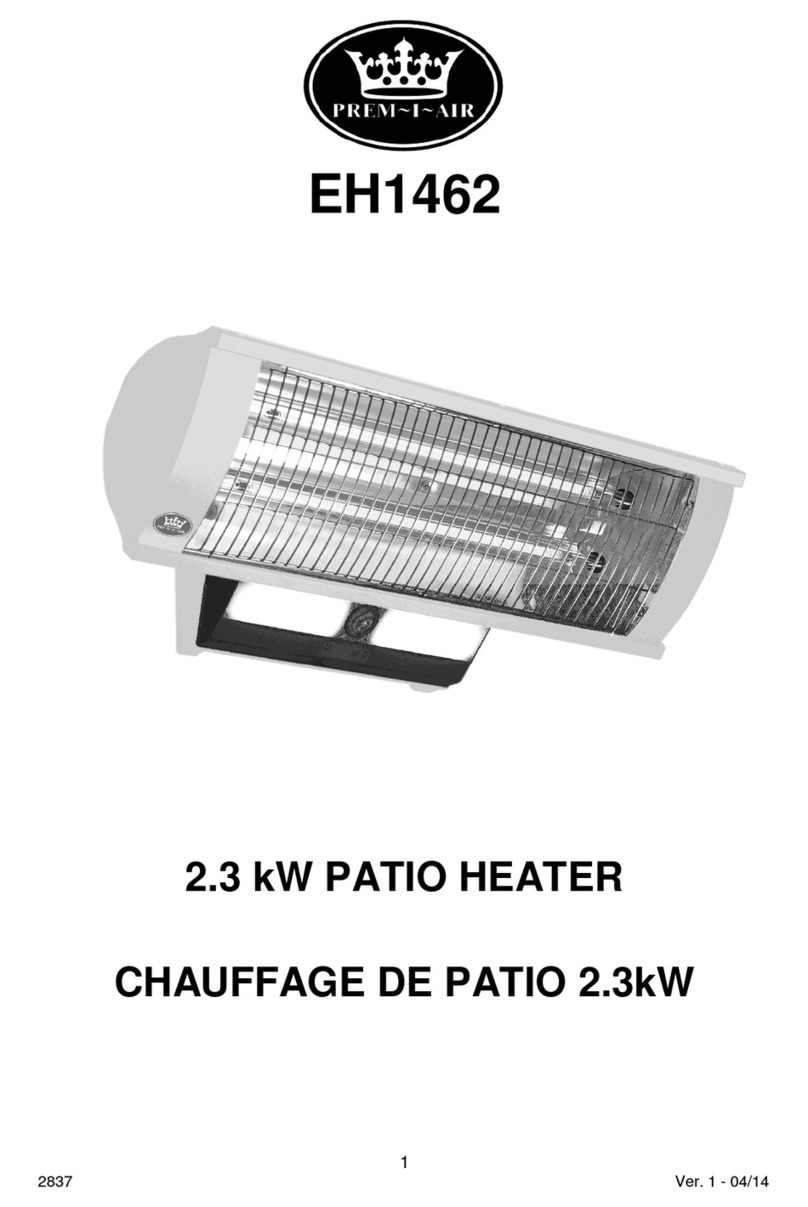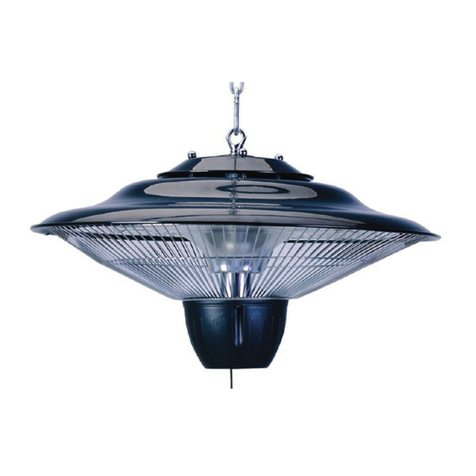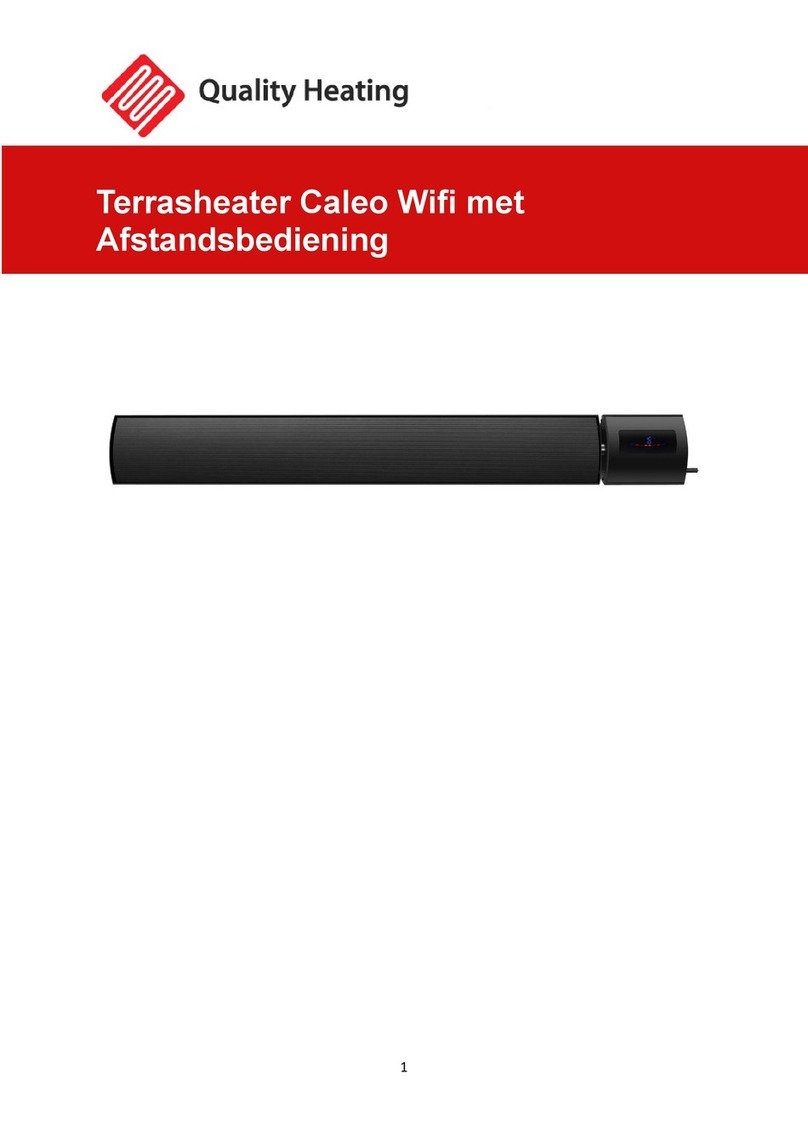General Safety Instructions
▲
! DANGER
CARBON MONOXIDE HAZARD
- This heater is a combustion appliance. All
combustion appliances produce carbon monoxide
(CO) during the combustion process. This product
is designed to produce extremely minute, non-
hazardous amounts of CO if used and maintained
in accordance with all warnings and instructions.
Do not block air flow into or out of the heater.
Carbon monoxide (CO) poisoning produces flu-
like symptoms, watery eyes, headaches, dizziness,
fatigue and possibly death. You can't see it and
you can't smell it. It's an invisible killer. If these
symptoms are present during operation of this
product get fresh air immediately!
- For outdoor use only.
- Never use inside house, or other unventilated or
enclosed areas.
- This heater consumes air (oxygen). Do not
use in unventilated or enclosed areas to avoid
endangering your life.
▲
! WARNING
- This product is fueled by propane gas. Propane
gas is invisible, odorless, and flammable. An
odorant is normally added to help detect leaks
and can be described as a "rotten egg" smell. The
odorant can fade over time so leaking gas is not
always detectable by smell alone.
- Propane gas is heaver than air and leaking
propane will sink to the lowest level possible.
It can ignite from matches, lighters, sparks or
open flames of any kind many feet away from
the original leak. Use only propane gas set up for
vapor withdrawal.
- Propane gas should be stored or used in
compliance with local ordinances and codes or
with ANSI/NFPA 58. Turn off propane when not in
use.
▲
! DANGER
EXPLOSION - FIRE HAZARD
- Never store propane near high heat, open ames,
pilot lights, direct sunlight, other ignition souces or
where temperatures exceed 120 (49 ).
Propane vapors are heavier than air and can
accumulate in low places. If you smell gas, leave
the area immediately.
- Never install or remove propane cylinder while
heater is lit, if pilot light is lit, or ignition source
and heater are hot to the touch.
- This heater is red hot during use and can
ignite flammables too close to the burner. Keep
ammables at least 2 feet from sides & 3 feet from
top. Keep gasoline and other flammable liquids
and vapors well away from heater.
- The propane cylinder must always be stored
outdoors in a well ventilated space. Never store
propane cylinder in an enclosed area (House,
garage, etc.). If heater is to be stored indoors,
disconnect the propane cylinder for outdoor
storage.
5
FOR YOUR SAFETY
If you smell gas:
1. Shut off gas to the appliance.
2. Extinguish open ame.
3. If odor continues, immediately call your gas
supplier and local Fire Dept.
▲
! DANGER
Failure to comply with the precautions and
instructions provided with this heater can result
in death, serious bodily injury and property loss
or damage from hazards of fire, explosion, burn,
asphyxiation, and/or carbon monoxide poisoning.
Only persons who can understand and follow the
instructions should use or service this heater.
▲
! WARNING
BURN HAZARD
Never leave heater unattended when hot or in use,
Keep out of reach of children.
▲
! WARNING
California Proposition 65
Combustion by-products produced when
using this product contain chemicals known
to the State of California to cause cancer,
birth defects, and other reproductive harm.


